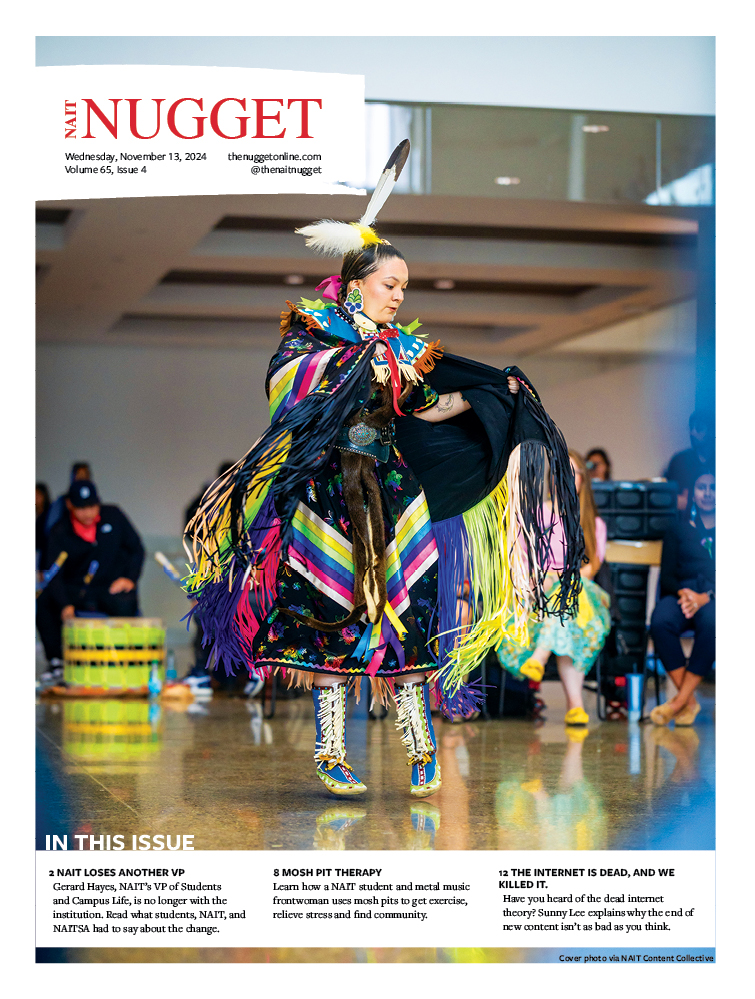By: Eryn Pinksen
An announcement by the Ontario government to cut tuition by 10% – and make additional student fees non-mandatory in postsecondary institutions – has Alberta schools concerned. While some students may rejoice at the thought of less fees, they may not understand how these fees benefit their day to day life on campus.
If the announcement turns into action, student associations (SAs) and unions, as well as student paper fees, would be deemed “non-essential” and cut from tuition. Without any subsidies from the government for that 10% each institution admin will get to decide which of the services would be cut or even removed completely.
There has yet to be legislation put in place in Ontario to remove student fees and student’s associations are awaiting clarification on what the changes will look like, so there may still be time to change the situation in Ontario.
“Student associations run a wide variety of student focused services on campus. Events, student newspapers, campus restaurants and bars – that are dedicated to serve students, not the broader community,” said NAITSA Director Chris Chelmick.
Ever had a meal at the Nest? Attended a NAITSA organized trivia event? Used a microwave on campus? Been a part of a club? Received a scholarship from NAITSA? Utilized your health benefits? These are all some of the tangible benefits that NAITSA provides.
SAs also negotiate for the lowest possible U-Pass prices as well as the most affordable health and dental plans, which students are able to opt out of. Student organizations are best positioned to negotiate these fees because they are students, who also have to pay these fees, representing the study body. Not only do they advocate for students, they also keep their institutions in check.
“One thing that the Ontario government is probably overlooking is that student’s associations and unions in Ontario are best positioned to hold the institutions to account on how they’re spending their money,” said Chelmick.
Chelmick explains that it is the student’s associations that place their schools “under a microscope” and ask about funding and expenses.
“Once the student association voice is diminished [the institution] will be able to do whatever they want, unopposed, to university and colleges in Ontario,” said Chelmick. “That can have a really long-term detrimental effect.”
An issue regarding non-instructional fees is that in the past they have not always been regulated. Broadly across Canada there have been cases where institutions under a tuition cap will add “non-instructional” fees to increase their revenue.
“As a way of going around the tuition cap to get more money out of students pockets,” said Chelmick. “We’ve been opposed to those because they’re often unregulated. This means that institutions can come up with anything that students really care about. Like a campus safety and security fee or student student space or student athletic fee.”
This occured in 2005 when Australia’s government of the time removed non-mandatory fees at their post-secondary institutions and after the services were nearly wiped out, it was reinstated to most institutions. It had had a major effect, not only on the the student organizations, but also on the colleges and universities themselves.
Reponses
A release from the Canadian University Press (CUP) states that if students associations and student paper fees are deemed non-mandatory, it would be up to the discretion of each administration to decide if their primary media coverage is essential.
“Our members offer scrutiny to university and college administrations, ensuring that there is transparency in university governance,” states the CUP release. “They are uniquely positioned to do so, and provide this important coverage without the same resources as the mainstream media.”
The Canadian Alliance of Student Associations’ (CASA), an advocacy organization representing undergraduate, graduate and polytechnic associations, published a press release.
“Without enough buy-in from students, who now also have to deal with the pressures of reduced financial aid, the services available on post-secondary campuses will suffer cuts or disappear entirely,” states the CASA release.
“It’s more important than ever that students be informed about the services provided by their student associations on campus, and that they stand up for them. In particular, I would encourage students to learn about the work that student associations do behind-the-scenes,” said CASA Chair Adam Brown.
NAITSA and Alberta Students Associations
NAITSA uses online student surveys to determine if students see the benefit and value of their association fees.
NAITSA has an “approval rating” of approximately 86 percent of students that responded “valuable to very valuable.”
“We want to know that number, we don’t want to just charge a fee and provide services and not know what NAIT students think about NAITSA,” said Chelmick.
A lot of the work that student associations do for students is behind-the-scenes. A key stakeholder that student organizations advocate to is the provincial government.
“Advocacy and being a student voice is critical,” said Chelmick.
The government of Alberta announced it will provide permanent funding for mental health on campus. Chelmick explains that they were made aware of the necessity for this funding on campus due to the work of students who lobby and speak on behalf of their student body.
In the upcoming provincial elections here in Alberta, there is a possibility that the question and debate of “non-mandatory” fees at post-secondary institutions is on the table.
“Hopefully our political parties in Alberta actually do see the value to student organizations,” said Chelmick.






